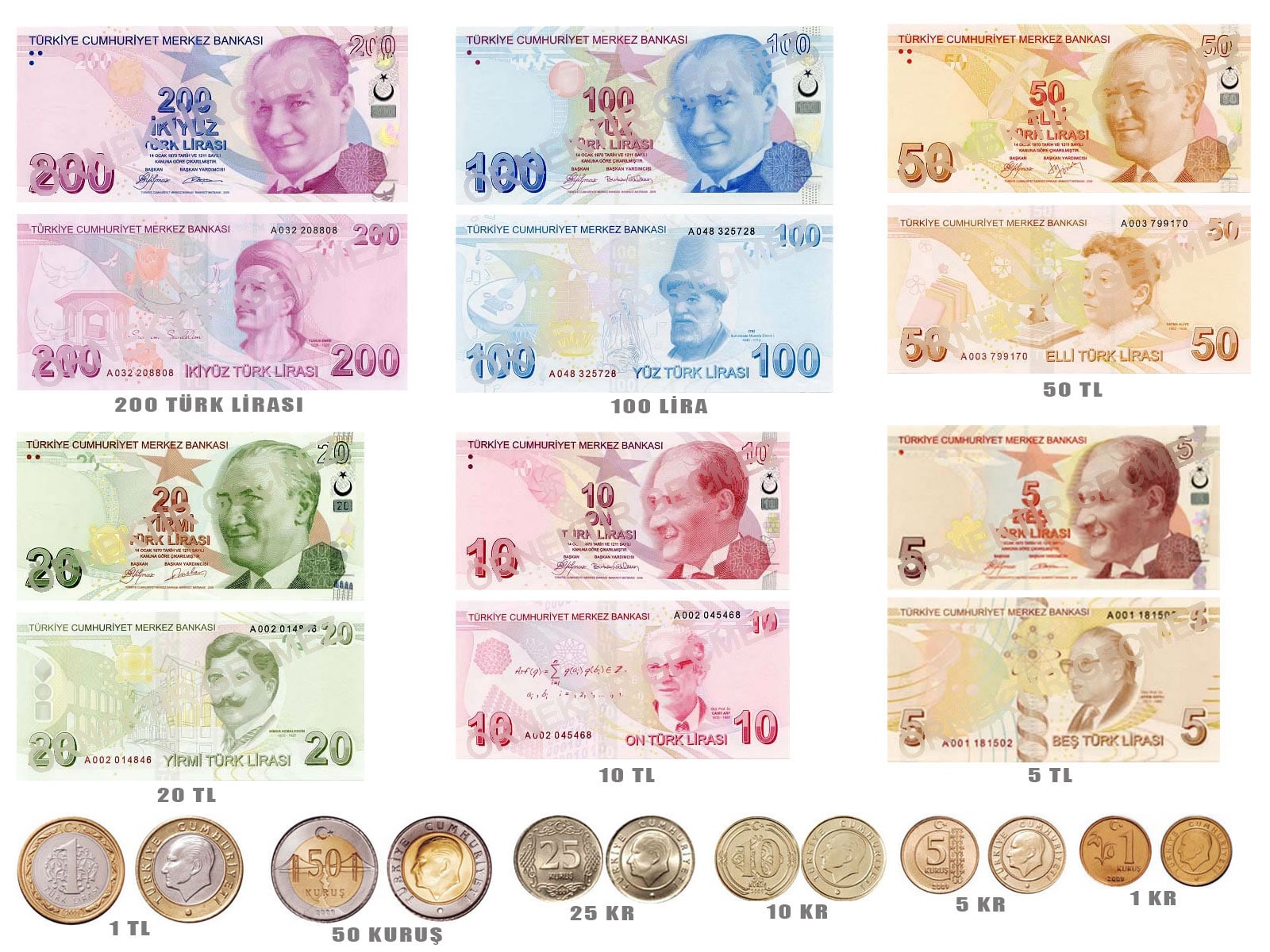If you’re traveling to Turkey, it pays to know about the Turkish Lira (Old name TRL and now known as TRY -Symbol: ₺). From the story behind the Turkish Lira to how to make the most of it today, this is your one-stop guide to Turkey’s currency.
Turkey, as a country, has a long, turbulent history, and its currency is no different. Since it was introduced as Turkey’s currency, the Lira has gone through many changes.
The Lira was introduced as a form of currency in 1844 as the Ottoman Lira, replacing the kurus as the primary unit of currency in the Ottoman Empire. Following the fall of the Ottoman Empire and the creation of the Republic of Turkey in 1923, the Lira became known as the Turkish Lira.
The Turkish Lira remained a reasonably stable currency until the 1970s when inflation began to devalue the Lira quickly. Finally, it became so degraded that Turkey was forced to scrap the old Lira and create a new currency. For reference, the following is a chart of the yearly average value of the Lira over time leading up to 2005.

Planning a trip to Turkey soon? Answer this trip planner and get your FREE quotation within 24 hours.

The E-9 banknotes were introduced on Jan. 1, 2009, and the old E-8 banknotes ceased to be valid on Dec. 31, 2009.
The official deadline to exchange old Turkish Lira to USD or any of your currencies was 2015. However, some online websites or collectors would be interested in paying you the current rate (simply six zeros dropped, and 1 million is equal to 1 lira now)
Because several different types of Lira were created in the last 20 years, it’s essential to notice the difference so you aren’t accidentally receiving old currency with no value.
One easy way to spot an old banknote (pre-2005) is the high number on the currency. Because the money became so devalued, million Lira notes were widespread and were worth less than a dollar by the time they were taken out of circulation.
The New TRY (E-8) banknotes are no longer valid or widely circulated, but it is still essential to look out for these and not to accept them. These banknotes show different portraits of Mustafa Kemal Ataturk (the founder and first president of The Republic of Turkey) and images of various historic and famous buildings and places throughout Turkey.
The current Turkish Lira, aka the only banknotes you should accept, still portrays Mustafa Kemal Ataturk on the front but has different historical figures from Turkey on the back of each banknote.
The new banknotes also have security features, including size variation between banknotes, different portraits of Ataturk, a holographic stripe, and a security thread visible under UV light with the numerical value of the banknote and the letters TL. Make sure to check one or more of these security features when accepting banknotes, especially the larger denominations.
Here’s a handy list of Turkish banknotes and their USD equivalent (as of Jan. 2, 2024 – subject to change)
Now that you know the history behind the TRY, it’s important to understand how to make the most of the Lira while you’re traveling in the country.
ATMs are widespread in Turkey, much like anywhere else, and are the most convenient way to get cash. However, it’s not always the cheapest or safest way to acquire those Turkish Liras.
Because bank fraud can be a problem in Turkey, just like anywhere else, it’s imperative to let your bank know that you’re going to be traveling there. Otherwise, when you try to pull cash out of an ATM, you might be denied, and your card could be turned off. This is meant to protect you but can also really put a damper on your vacation.
Using a currency exchange is one of the best ways to get official TRY banknotes. Just make sure you bring U.S. dollars (or Euros or Pounds) with you to exchange. Currency exchange offices in local market areas usually have the best exchange rates. Airports almost always have the worst exchange rates, so avoid changing your money until you’re in the city.
If you don’t want to walk around with a bunch of cash, you’re in luck. Most places in Turkey accept credit cards, so that that plastic might be your best friend. As with your bank card, make sure your credit card company knows that you’re traveling so they don’t shut down your card when they see charges pop up in Turkey.
It’s always important to keep up to date on the current exchange rate so you know how much you’re spending and whether you’re getting a fair price at an exchange office. Currently, 1 U.S. Dollar is worth 29,67 Turkish Lira, but that could change quickly.
If you purchase a tour or transport online with a credit card, make sure you bring that card with you for them to confirm and protect your purchases.
In Turkey, modest tipping is customary for porters, housekeepers, and restaurant servers. However, most credit card slips don’t include a space for a tip, so make sure to bring a little cash to show your appreciation.
When shopping in local markets, bring Lira and small denominations if possible. While the local shopkeepers may have some change, it makes it easier for you and them to pay in smaller denominations.
While knowing all about the Turkish Lira is undoubtedly essential for making your money last in the country, it’s certainly not the only thing you need to know.
If you’re planning a trip to Turkey, you’re in the right place. From tips on the best destinations to the absolute best tours, we have everything you need to experience the way it’s meant to be.
Did you know money was invented in the late seventh century BCE by the Lydians in Sardis here in Turkey?